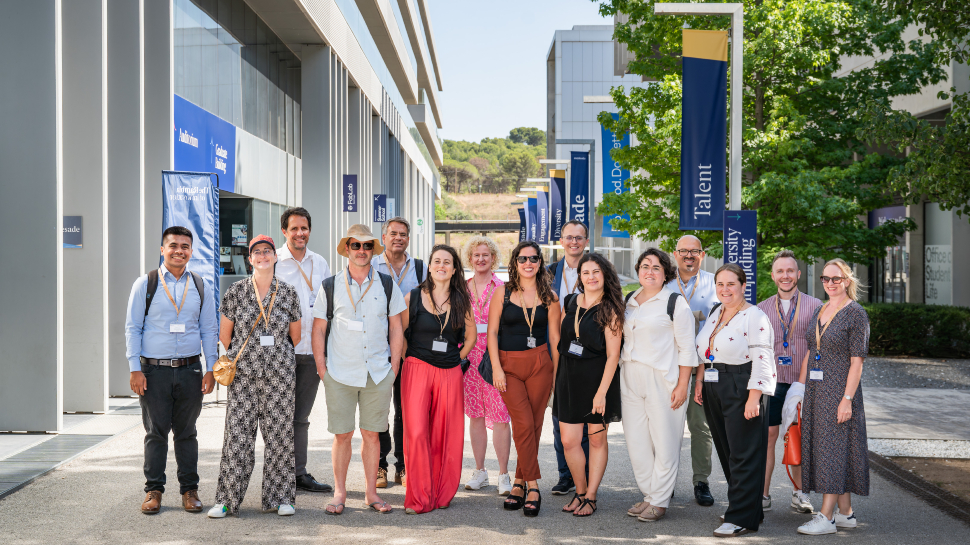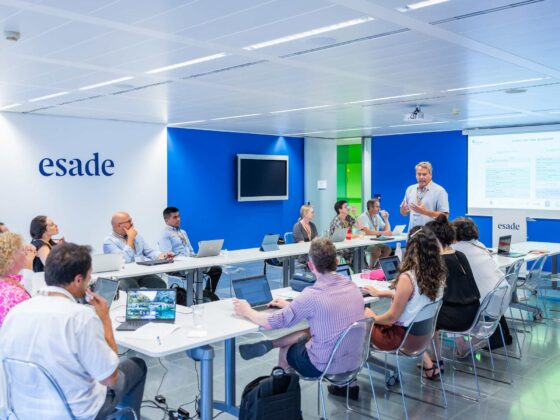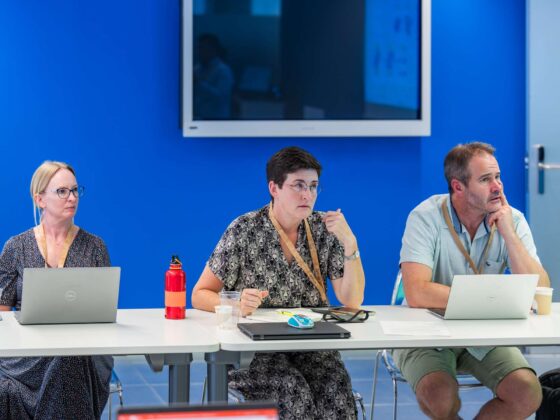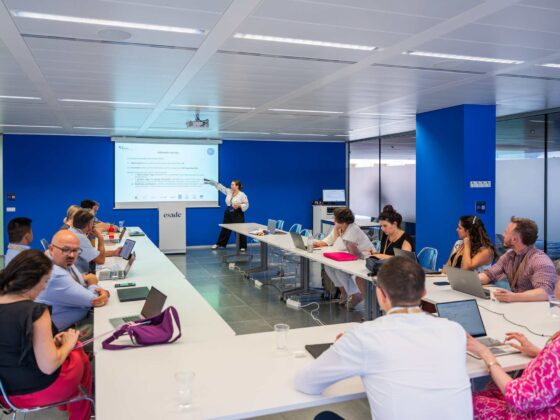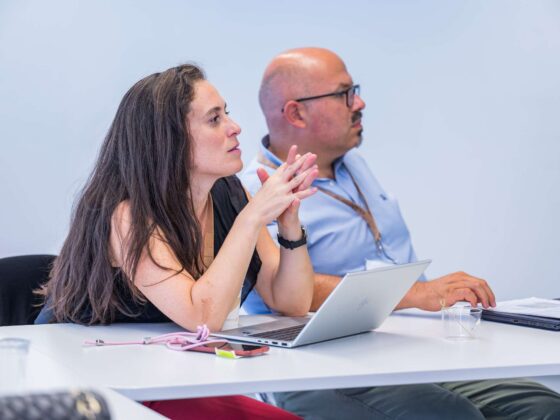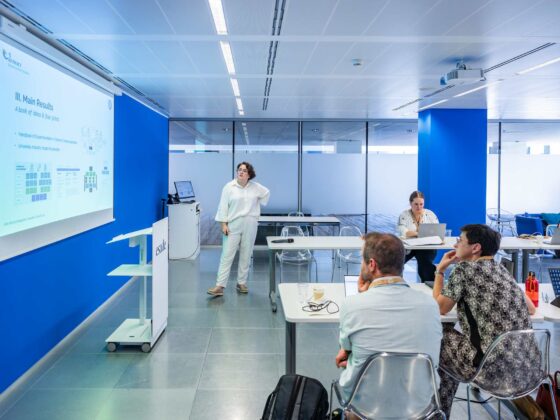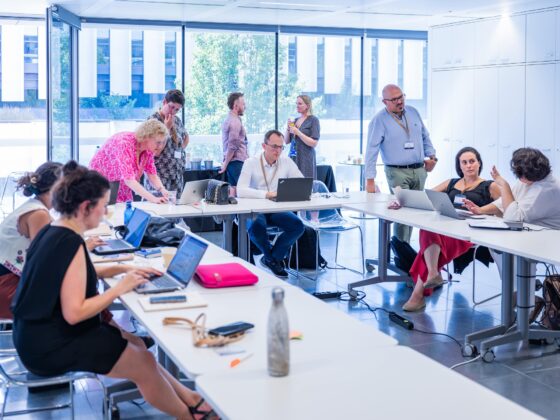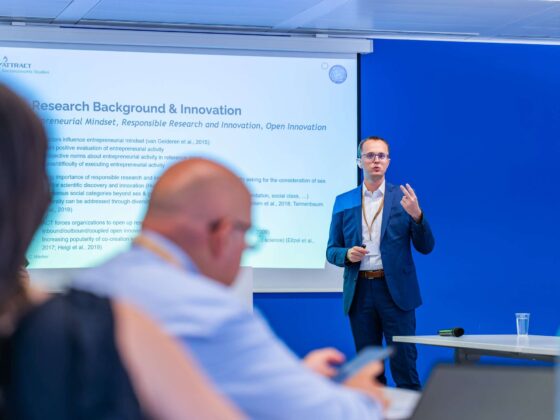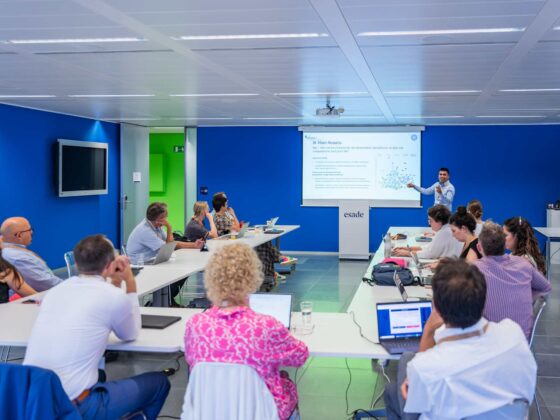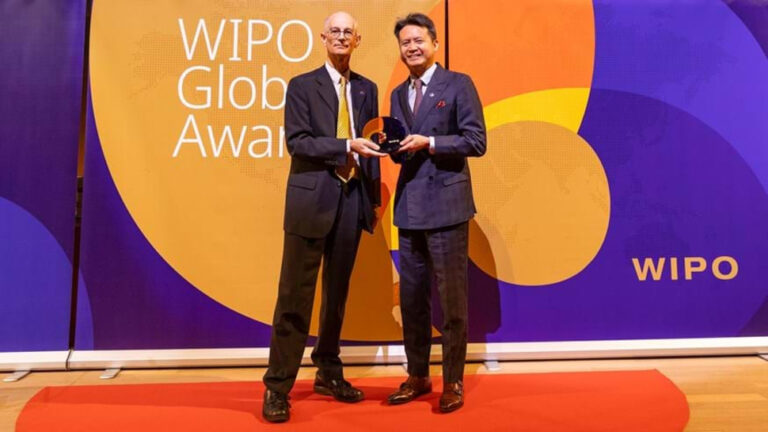The Socioeconomic Studies (SES) seek to enhance the conventional impact metrics and build upon them towards new insights on how to measure the potential of European Research Infrastructures and Innovation Ecosystems (ERI-IEs) like ATTRACT. The goal is to understand what works, why it works, and which mechanisms could be improved. Recently, the eight projects presented their conclusions at the SES Final Workshop, held at Esade Business School from September 2-3.
Throughout the two-day workshop, representatives from the SES projects had the opportunity to showcase their final results and engage in constructive discussions on both successes and areas for improvement. This gathering fostered a collaborative environment, and the insights gained from the workshop are expected to inform and inspire new avenues of collaboration, building on what was learned from the ATTRACT initiative.
Importantly, the results are expected to provide crucial input for national and European policymakers. By informing the development of future research and innovation policies, these findings will play an important role in shaping the direction of European Research Infrastructures and Innovation Ecosystems, ensuring they become more effective and impactful.
On the first day of the workshop, participants visited the Centre for Genomic Regulation (CRG) at the Barcelona Biomedical Research Park. During the visit, they had the opportunity to learn about the work conducted by scientists there. For example, at the Proteomics Laboratory, they explored how proteins are analysed to uncover the complexity of their functions. They also visited the Serrano Lab, where scientists strive to achieve a quantitative understanding of biological systems, enabling the prediction of systemic features and the potential to design or modify their behaviour.
On the second day, participants attended a presentation delivered by David Osimo, Director of Research at The Lisbon Council, who discussed policy and funding within European Research.
Explore all the Socioeconomic Studies:
- ABC4E: it aims to enhance open innovation in science-driven projects through behavioural training based on Acceptance Commitment Therapy (ACT). By fostering psychological flexibility among scientists, the project aims to break down barriers to interdisciplinary collaboration and facilitate knowledge exchange.
Future vision: the research’s long-term goal is to measure psychological flexibility and behaviours in big research centres and replicate the syllabus in an experiment with a control group without ACT, as well as to scale the course by KTO and ACT ‘local’ coaches and the training course of the ABC4E project. - ATTRACT.EMDOI: it explores the influence of entrepreneurial mindsets, diversity within research teams, and open innovation practices on the commercialization success of breakthrough technologies.
Future vision: the study only focused on the ATTRACT ecosystem; future work should compare their findings to the processes inherent in other funding frameworks to assess whether the ATTRACT scheme was more or less successful in both, achieving commercialization of breakthrough technologies as well as achieving inclusive innovation outcomes that consider the diversity of human beings. - CASEIA: it focuses on comparative analysis to better understand how the support offered through ATTRACT phase 1 has led to impacts such as strengthened innovation ecosystems, commercial applications of innovation, skills development, and broader social goods. It aims to measure ATTRACT through three case studies as well as to develop a toolbox that allows them to measure the impact of big science beyond econometrics.
Future vision: the research team envisions expanding the application of the CASEIA analytical framework to a broader set of projects, enhancing its robustness and relevance across diverse contexts. By doing so, they aim to refine the framework’s ability to generate comprehensive and actionable insights. In parallel, the team is working to establish a robust monitoring, evaluation, and learning system for ATTRACT-type interventions, ensuring continuous improvement and alignment with objectives. - COMPUTE IMPACT: it investigates how industrial partners benefit from ERI-IEs computational tools and datasets, particularly in life sciences like bioinformatics. By focusing on initiatives such as AlphaFold under the European Molecular Biology Laboratory (EMBL), the study aims to understand and measure the specific value these Research Infrastructures (RIs) bring to industry.
Future vision: the researchers aim to deepen their understanding of the role of data and data infrastructures in science and innovation. They plan to engage with the industry by recruiting companies rather than individual researchers and are exploring a partnership with an AI healthcare company to study data infrastructures and develop a holistic framework for assessing the impact of research infrastructure data. - CORE: it explores the intricacies of European Research Infrastructure innovation ecosystems. Fundamentally, the project seeks to unravel how social connections and knowledge dissemination fuel effective collaboration, laying the groundwork for transformative innovation.
Future vision: the research team acknowledge the need for facilitating and supporting RDIs in their collaboration attempts beyond their consortia to create systemic value, address network-level challenges they have identified through design interventions, test their findings and tools in other ecosystems that experience similar issues, amplify good practices, among others. - ExSACT: it aims to simplify and optimize public investments in research and technology infrastructures while navigating state aid regulations. It focuses on improving industry-academia collaboration within ERIs by addressing complexities in intellectual property rights (IPR) transfer and funding allocation.
Future vision: review other national legislation whether they use the differentiation ‘economic/non-economic activity’ or ‘market activity/public service’, discuss with the Slovenian Ministry of Finance about replacing the differentiation ‘market activity/public service’ with ‘economic/non-economic activity’, Find good practices for the valuation of intellectual property as a financial asset of a spin-off company, among others. - NEXT: this project aims to use experimental methods to evaluate and improve science commercialisation initiatives, addressing the lack of experimentation in this area of innovation policy.
Future vision: take advantage of the handbook of Experimentation in Science Commercialisation they are preparing to create new programmes bringing researchers, agencies and other stakeholders to the table, replicate Accelerator to expand the use of experiments, and work to better understand barriers, enablers and other key challenges (e.g. with XFEL/ESRF). - NEXTGEN-TECH-ED: it focuses on leveraging Science-based Entrepreneurship Education (SBEE) within ERIs to foster knowledge circulation in innovation ecosystems. Through case studies at academic institutions and research projects like ATTRACT, it seeks to understand SBEE’s impact on entrepreneurial ecosystems and technology transfer.
Future vision: developing didactical design principles can be deduced from the current initiatives in science-based entrepreneurship education, improved Science facilities with recognized importance across the EU, an assessment tool/design schemes for effective entrepreneurship education, among others.
Here are some pictures of the presentations:
For more information
Visit the ATTRACT showroom to see all the Socioeconomic studies.
